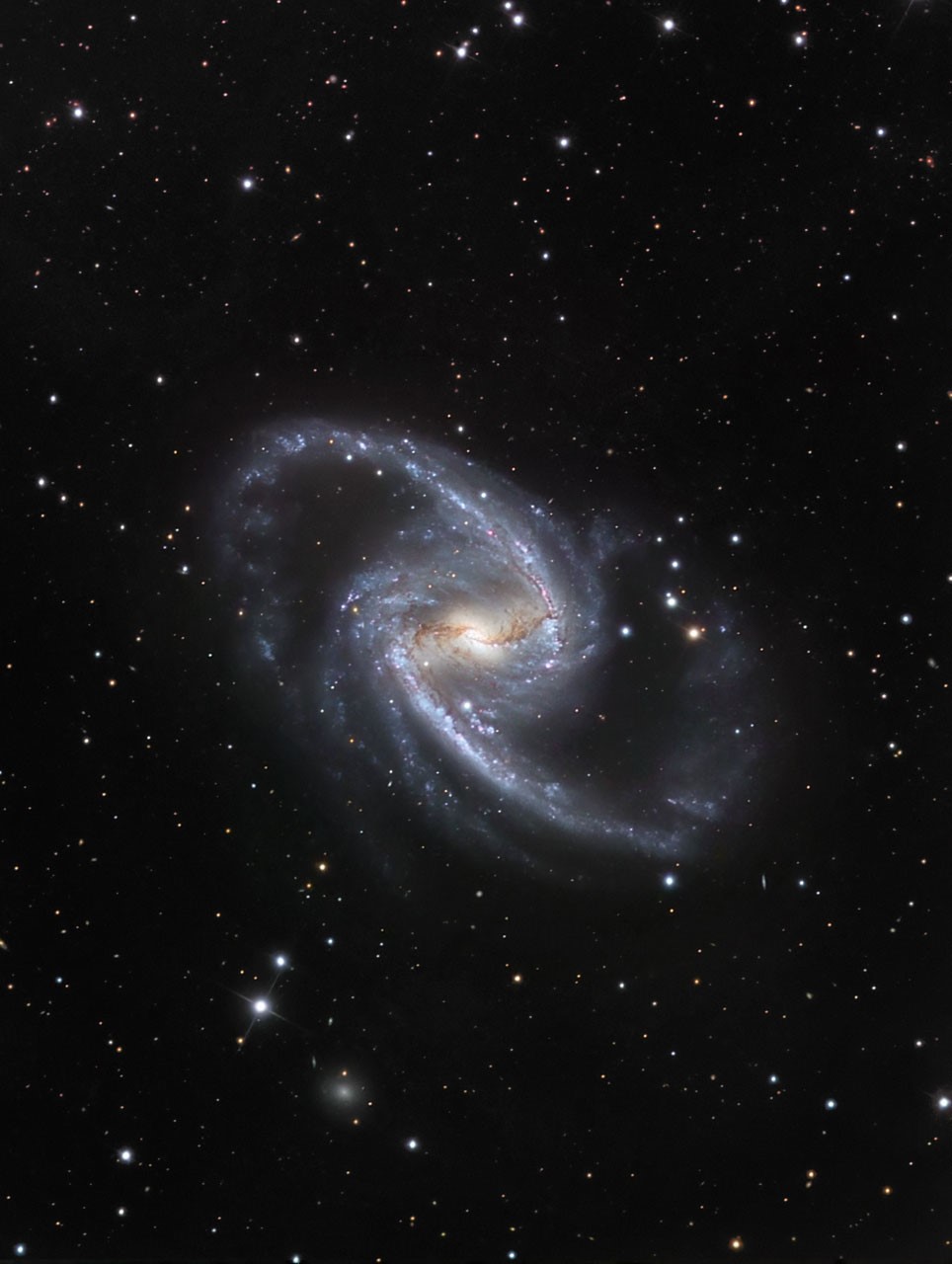







| BOOKS | F. A. Q. | ARTICLES | TALKS | ABOUT KEN | DONATE | BEYOND OUR KEN |
|---|
By Ken Croswell
Published on New Scientist (August 31, 2017)

Spectacular barred spiral galaxy NGC 1365. Credit: ESO/IDA/Danish 1.5 m/ R. Gendler, J-E. Ovaldsen,
C. Thöne, and C. Feron.
You may be able to thank the Milky Way’s spiral arms for supplying Earth with a fair share of the vital element at our planet’s birth.
Oxygen is the third most abundant chemical element in the universe, after hydrogen and helium. It arises mainly in massive stars, which forge the element during their brief lives and then cast it into space when they explode.
But a galaxy’s spiral arms also help spread the wealth, says I-Ting Ho at the Max Planck Institute for Astronomy in Heidelberg, Germany.
He and his colleagues have measured oxygen levels throughout a galaxy named NGC 1365, located 60 million light-years away in the constellation Fornax. It has two gargantuan spiral arms joined together by a bar of older stars, all embedded in a huge disc of stars and interstellar gas and dust. As viewed from Earth, the galaxy rotates clockwise, but most of the stars and gas revolve faster than the spiral arms themselves.
Ho’s team has discovered that oxygen is 60 per cent more abundant in the spiral arms than in gas that has just passed through them.
“To the best of our knowledge, this is the most extreme case so far,” Ho says. In contrast, using older instruments, astronomers have failed to detect any variations in oxygen levels as one proceeds clockwise around most spiral galaxies.
We can’t see our Galaxy from the outside, so it’s harder to do this in the Milky Way. Nevertheless, there are hints of such variation in our Galaxy too.
In a spin
“It’s certainly a fascinating observation,” says Bruce Elmegreen at the IBM Research Division in Yorktown Heights, New York. “It would not have been predicted, I think, and that’s why it’s so interesting.” Understanding the result, he says, will require simulations that incorporate spiral arms, star formation, supernova explosions, and oxygen enrichment.
Ho thinks that as gas that has just passed through a spiral arm revolves toward the next arm, massive stars within the gas explode, raising the oxygen level. The next generation of newborn stars inherit this oxygen and raise the level further when they explode. The abundance rises until the oxygen levels reach a peak in the next spiral arm.
Then turbulence in the spiral arm mixes the oxygen-rich gas with other gas, diluting it. That explains why gas that has just passed through a spiral arm is lowest in oxygen.
By spreading the oxygen around, however, the spiral arms help distribute the element far and wide so that oxygen eventually makes its way into future generations of stars and planets elsewhere in the galaxy.
Ken Croswell earned his Ph.D. in astronomy from Harvard University and is the author of The Alchemy of the Heavens and The Lives of Stars.
"An engaging account of the continuing discovery of our Galaxy...wonderful." --Owen Gingerich, The New York Times Book Review. See all reviews of The Alchemy of the Heavens here.
"A stellar picture of what we know or guess about those distant lights."--Kirkus. See all reviews of The Lives of Stars here.
| BOOKS | F. A. Q. | ARTICLES | TALKS | ABOUT KEN | DONATE | BEYOND OUR KEN |
|---|